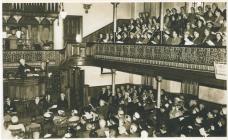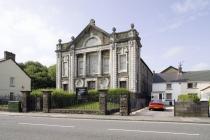Bethania, Maesteg
Early 19th century Wales saw a period of rapid industrialisation. The south Wales valleys became peppered with ironworks, and coal mines and this progressive urbanisation continued well into the mid-century.
A Baptist community began to surface from the iron and coal workers in Maesteg, congregating at first in homes and public houses. This congregation grew and in 1832 they began building the first Bethania, the Mother Baptist church of the Llynfi valley.
It would have been a long-wall chapel, differing from Anglican churches in its humble simplicity and its focus on the pulpit. Attendance grew and in 1841, a larger chapel was built. By the 1850s the chapel had a congregation of about 700, and the building became a thriving cultural hub that housed social and community events, festivals and eisteddfodau. Interestingly, one of these eisteddfodau during this period included a lecture entitled: ‘Geological facts and Biblical truths: are they contradictory?’
Bethania was enlarged in 1859 and rebuilt again in 1898. The present Bethania chapel was a product of the last ‘Great Revival’ of 1904 and was constructed in 1908. It was designed in a Classical Beaux Arts style by the locally born architect Sir William Beddoe Rees, one of his greatest achievements. It is said to seat up to 1001 people.
Following its closure, it was acquired by Addoldai Cymru in 2006, the largest chapel it has acquired to date.







